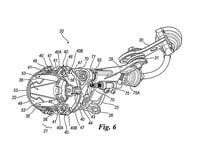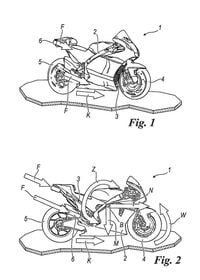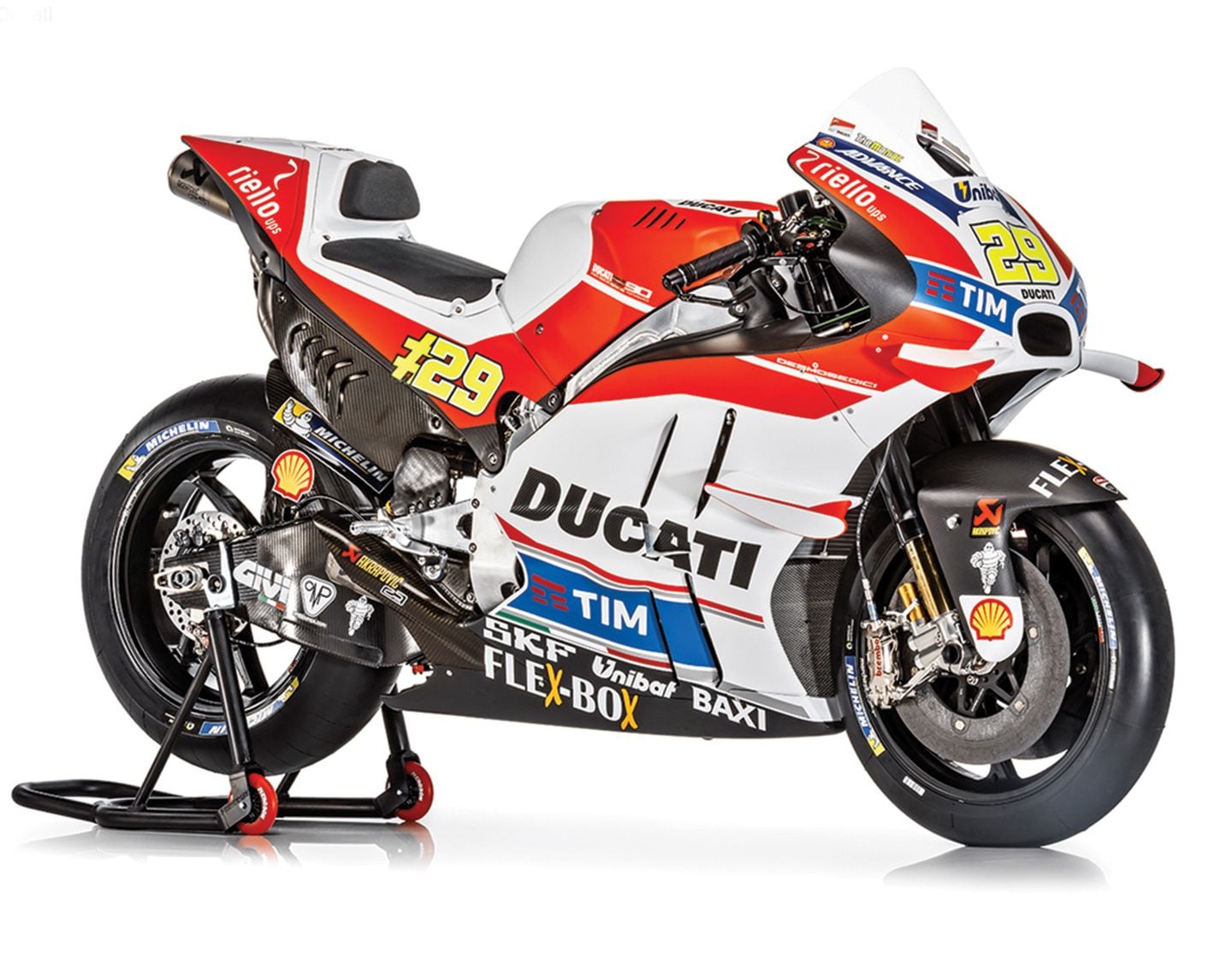The story made the rounds on several user forums and moto-websites, and displayed as proof a couple of diagrams that showed interlocking petals surrounding the exit of an exhaust pipe that looks remarkably like that of the Desmosedici, mounted on a faired motorcycle that certainly appears to be a Ducati.
But is it "fake news"? Many Ducatisti and in-the-know journalists including our renowned nuts-and-bolts colleague at Cycle World, Kevin Cameron, are skeptical of the story, pointing out the line drawings are unsourced and feature no trademarks or other designations.
Adding to the mystery, a Ducati USA rep reached by email would neither confirm nor deny the existence of the patent application, adding that the company's official response to the story is "Ducati is always pushing the developmental envelope of on-track performance." So while the healthy skepticism is appreciated, the lack of official denial from Ducati is noteworthy. And considering the company's history of racetrack innovation -- and the promise of a new Superbike in 2018 -- any revolutionary performance-enhancing technology from Bologna definitely seems feasible.
The advantages to a variable exhaust are apparent. Most of the time, a MotoGP or Superbike engine simply can’t transfer all of its available power to the rear wheel; either the tire simply spins or the immense thrust would lift the front tire off the ground and could flip the bike over backwards. Instead of forcing a race tuner to restrict engine performance upon acceleration, a variable exhaust system could allow the rider to give the bike (most of) all it’s got, (most of) all the time.
How does it work? Just like on a fighter jet, an array of interlocking petals surround the tailpipe’s exit, allowing the opening to be widened or narrowed and therefore controlling the force of the gas being expelled. Instead of increased speed, the main advantage of variable exhaust flow would be to allow engineers to tune the back pressure in the exhaust throughout the rev range -- as well as control thrust upon acceleration to discourage the front wheel from lifting off the ground, as those those now-banned winglets were intended to do.
Without official comment from Ducati, it’s fun to speculate on the potential of this technology -- and to wonder how it could be used on street applications. But for now it’s little more than paddock chatter. Looks like we’ll have to wait and see what 2018 brings.










/cloudfront-us-east-1.images.arcpublishing.com/octane/STXHBVLZTCDSOPZ6AHDEVNAAN4.jpg)



/cloudfront-us-east-1.images.arcpublishing.com/octane/S35YGSEMEZB4BLTDJTSZPF4GLA.jpg)
/cloudfront-us-east-1.images.arcpublishing.com/octane/5UOT6HPX2JFMRJAX6EH45AR4MQ.jpg)
/cloudfront-us-east-1.images.arcpublishing.com/octane/OKWOJWAKP5EP3OACCRRWPCIX2Q.jpg)
/cloudfront-us-east-1.images.arcpublishing.com/octane/2WF3SCE3NFBQXLDNJM7KMXA45E.jpg)
/cloudfront-us-east-1.images.arcpublishing.com/octane/G4MG6OUCJNBSHIS2MVVOTPX65E.jpg)
/cloudfront-us-east-1.images.arcpublishing.com/octane/IIGGWFOTOJGB7DB6DGBXCCMTDY.jpg)
/cloudfront-us-east-1.images.arcpublishing.com/octane/QSTCM6AVEZA5JJBUXNIQ3DSOF4.jpg)
/cloudfront-us-east-1.images.arcpublishing.com/octane/U4I7G625B5DMLF2DVIJDFZVV6M.jpg)
/cloudfront-us-east-1.images.arcpublishing.com/octane/B6XD6LS6IVCQPIU6HXDJSM3FHY.jpg)
/cloudfront-us-east-1.images.arcpublishing.com/octane/ICL63FEDDRDTTMINYICCEYGMDA.jpg)
/cloudfront-us-east-1.images.arcpublishing.com/octane/FCGZHQXRBZFLBAPC5SDIQLVF4I.jpg)
/cloudfront-us-east-1.images.arcpublishing.com/octane/WNOB6LDOIFFHJKPSVIWDYUGOPM.jpg)

/cloudfront-us-east-1.images.arcpublishing.com/octane/X33NU3E525ECRHXLNUJN2FTRKI.jpg)
/cloudfront-us-east-1.images.arcpublishing.com/octane/6KKT5NNL2JAVBOXMZYS5ZO76YA.jpg)
/cloudfront-us-east-1.images.arcpublishing.com/octane/J5RKG5O455GMPGQRF2OG6LRT7A.jpg)
/cloudfront-us-east-1.images.arcpublishing.com/octane/GX2CIZKQVRH2TATDM26KFG2DAE.jpg)
/cloudfront-us-east-1.images.arcpublishing.com/octane/ZWIDYSAKQZHD5BHREMQILXJCGM.jpg)
/cloudfront-us-east-1.images.arcpublishing.com/octane/CYUHJZCTSJCH3MRAQEIKXK7SCQ.jpg)
/cloudfront-us-east-1.images.arcpublishing.com/octane/LKOFINY56FCXJCANJ5M7ZDQUBY.jpg)
/cloudfront-us-east-1.images.arcpublishing.com/octane/4NBPDACMWJH63JQYJVK3QRBDZI.jpg)
/cloudfront-us-east-1.images.arcpublishing.com/octane/KKHQHRR3FJGX7H2IPU6RALMWG4.jpg)

/cloudfront-us-east-1.images.arcpublishing.com/octane/5IOFS5JAE5FOXMNA23ZRAVVYUU.jpg)